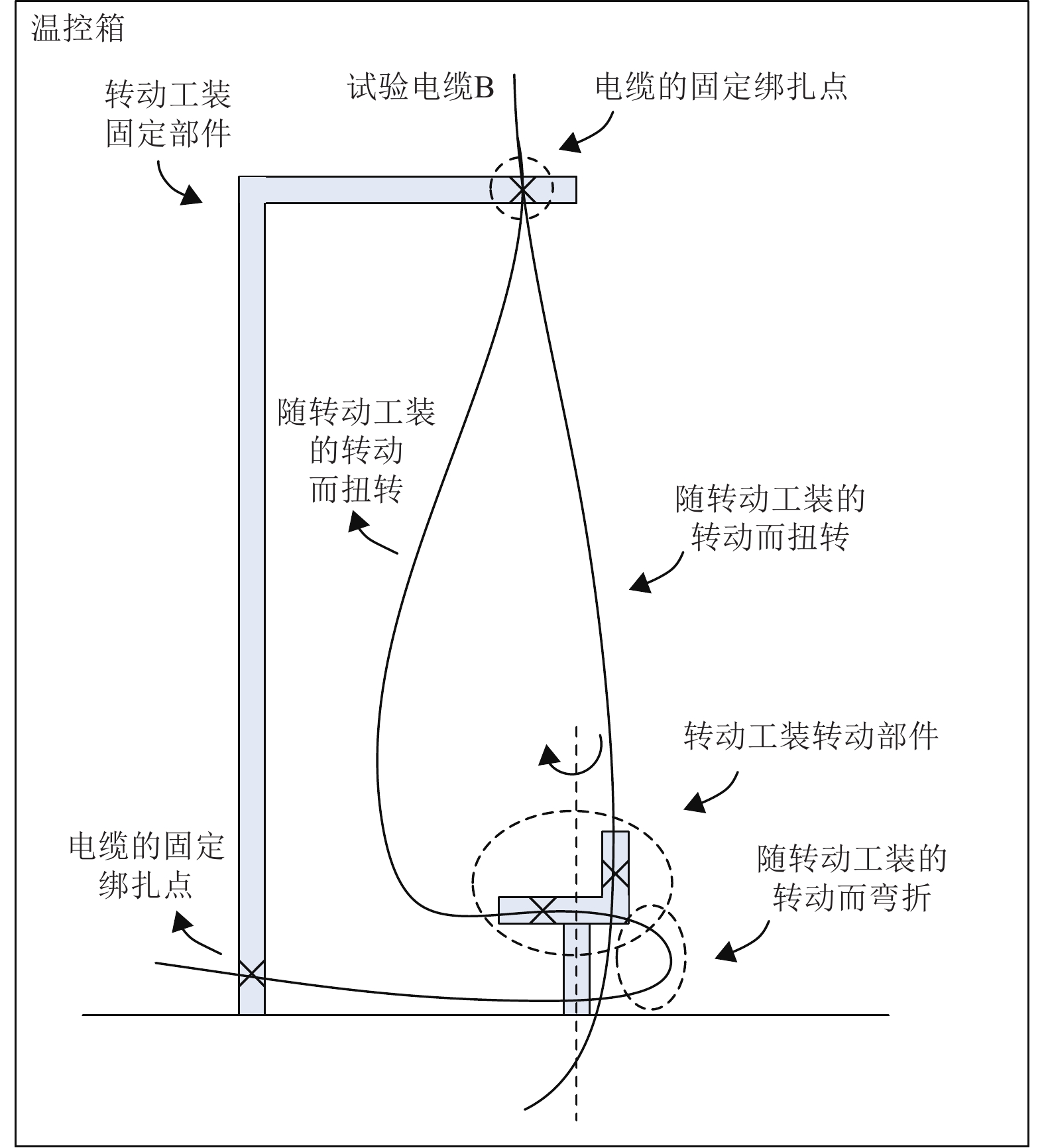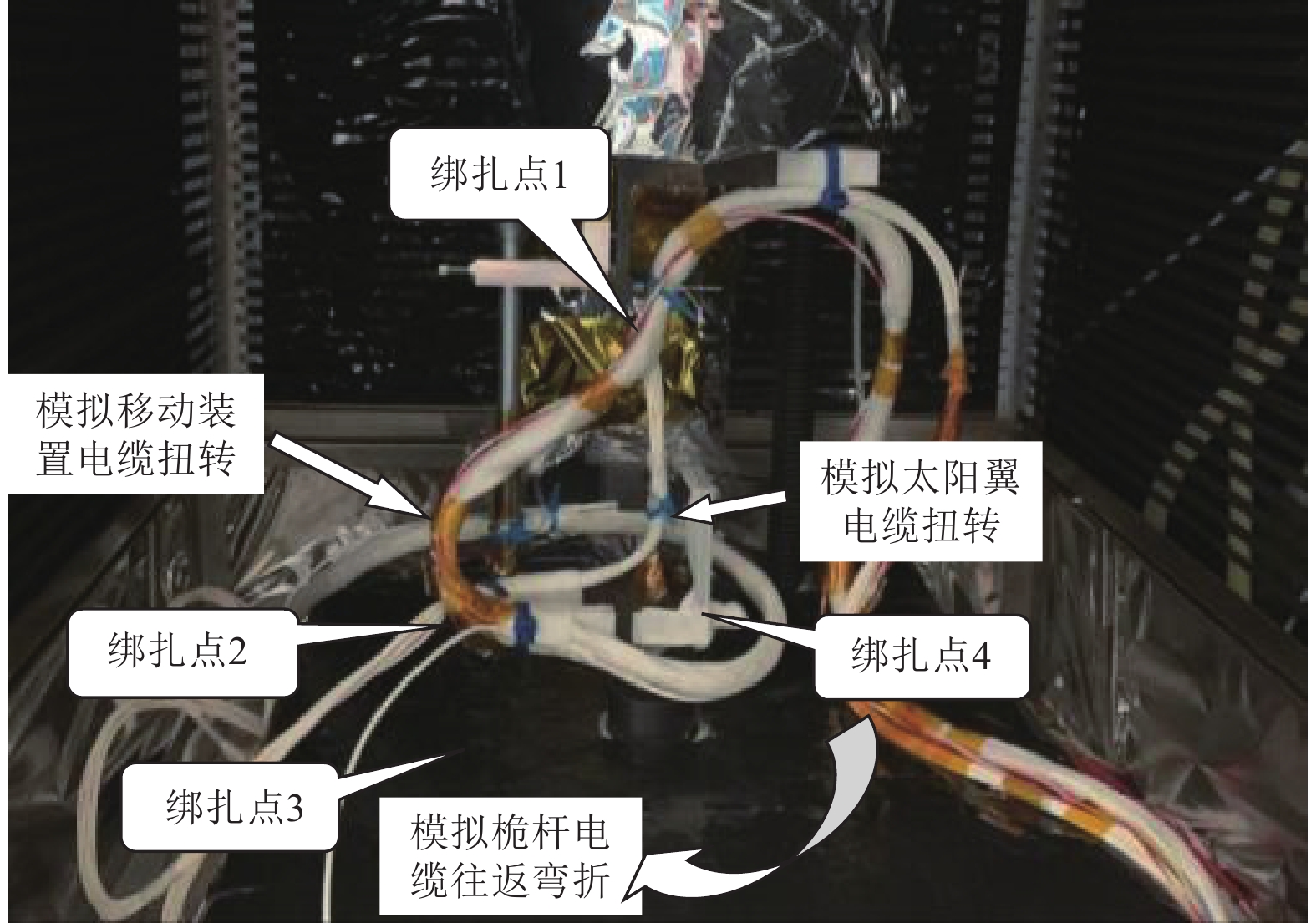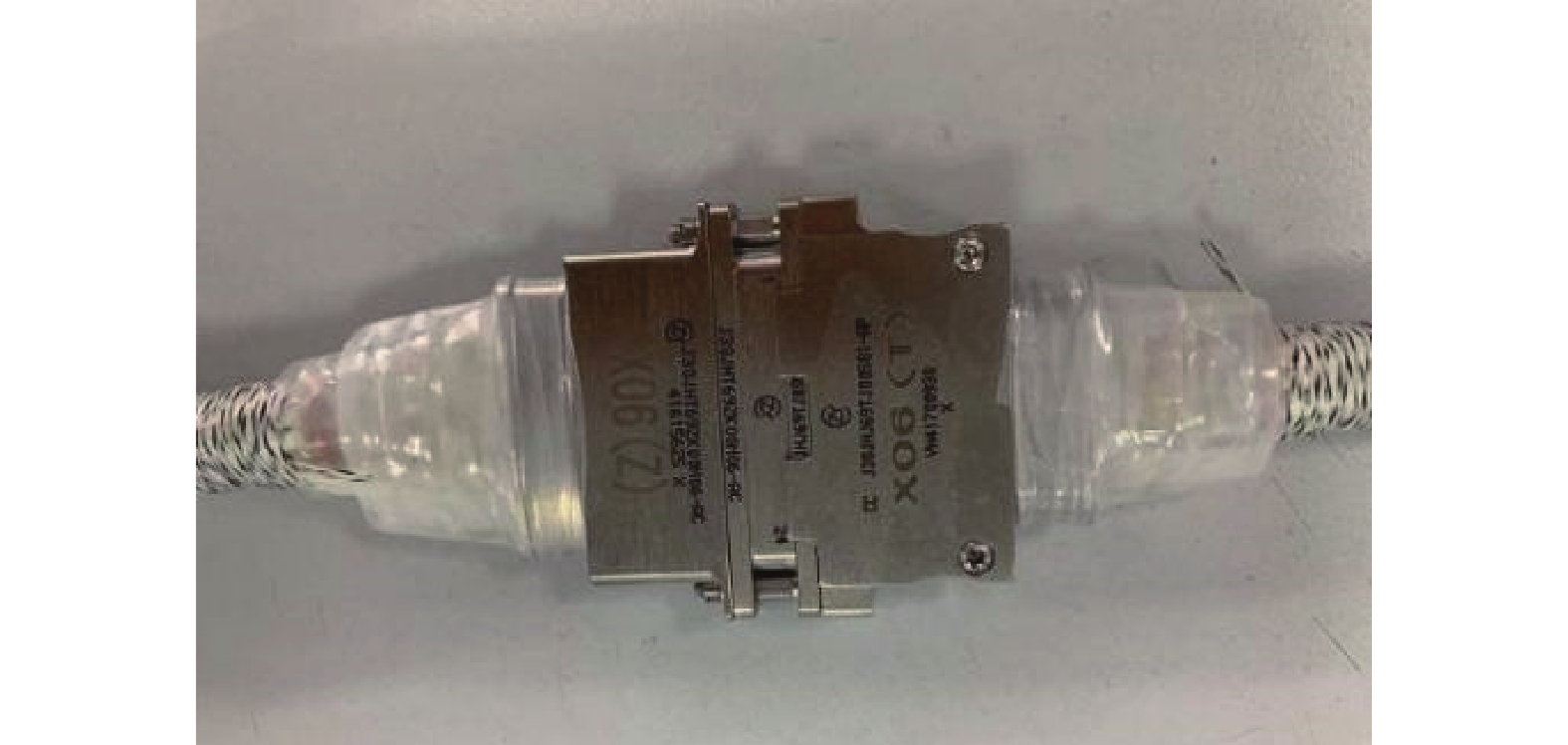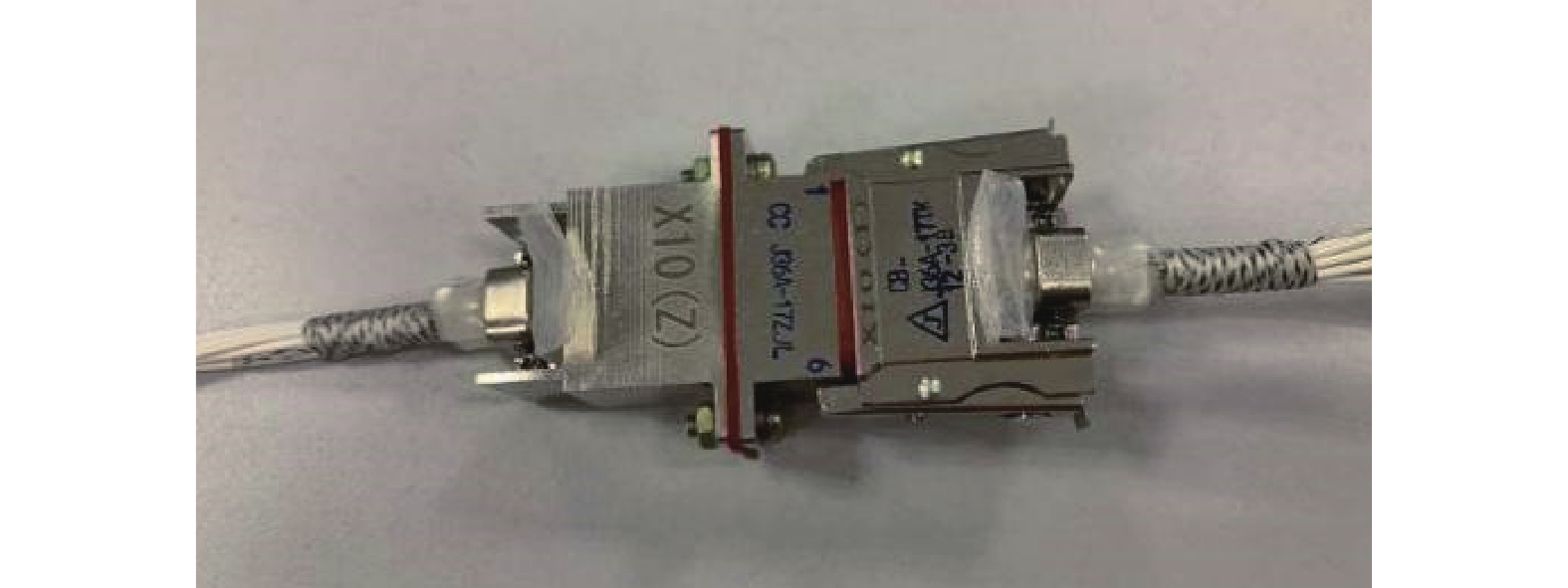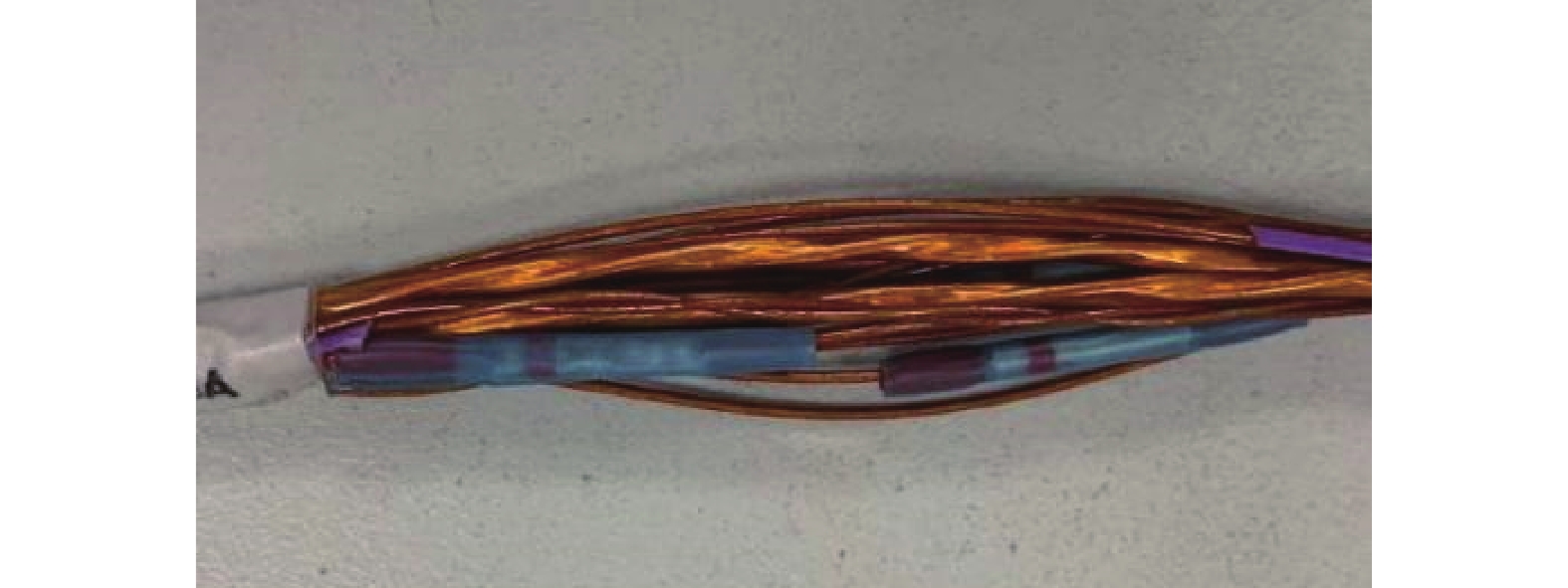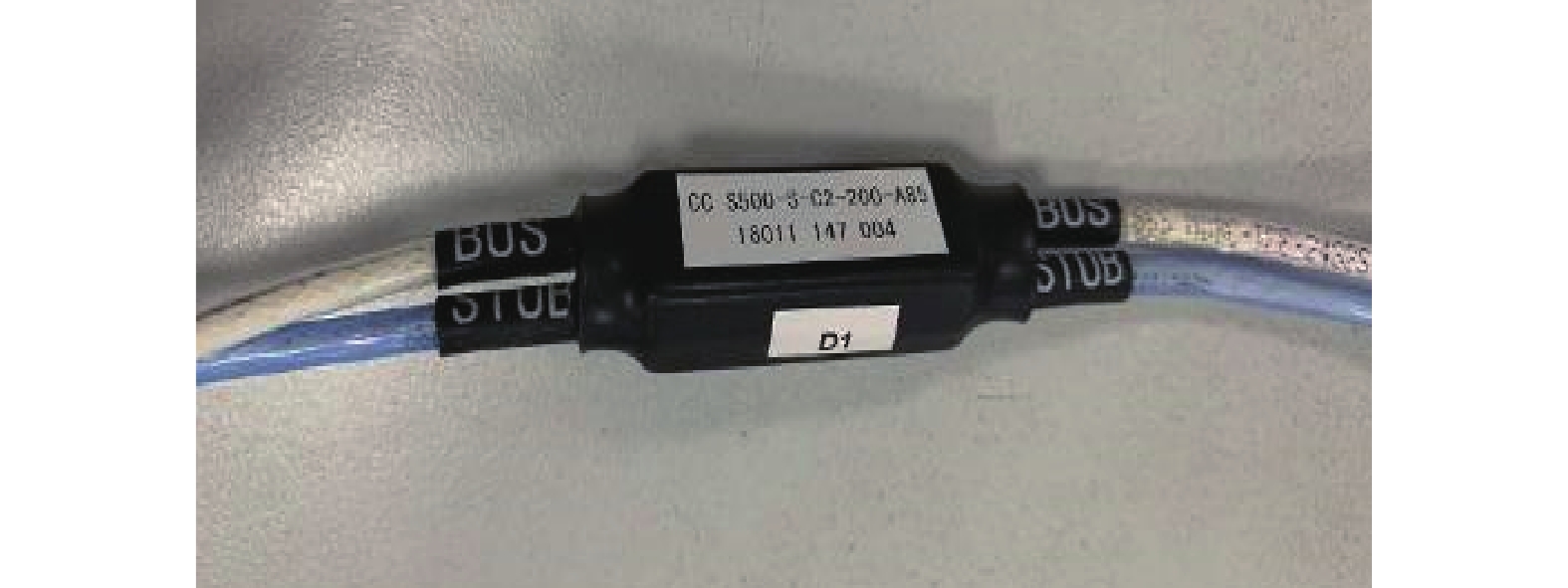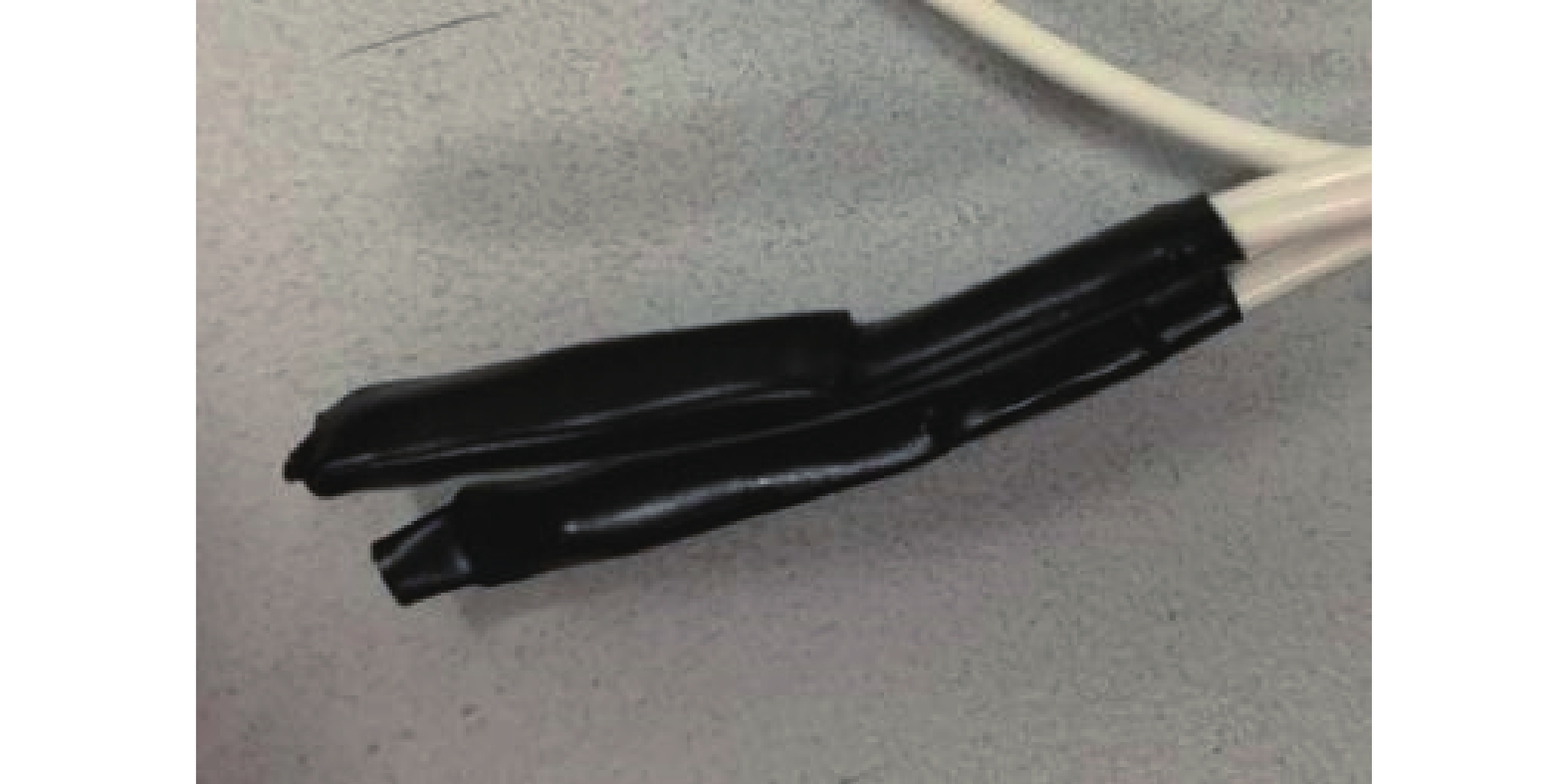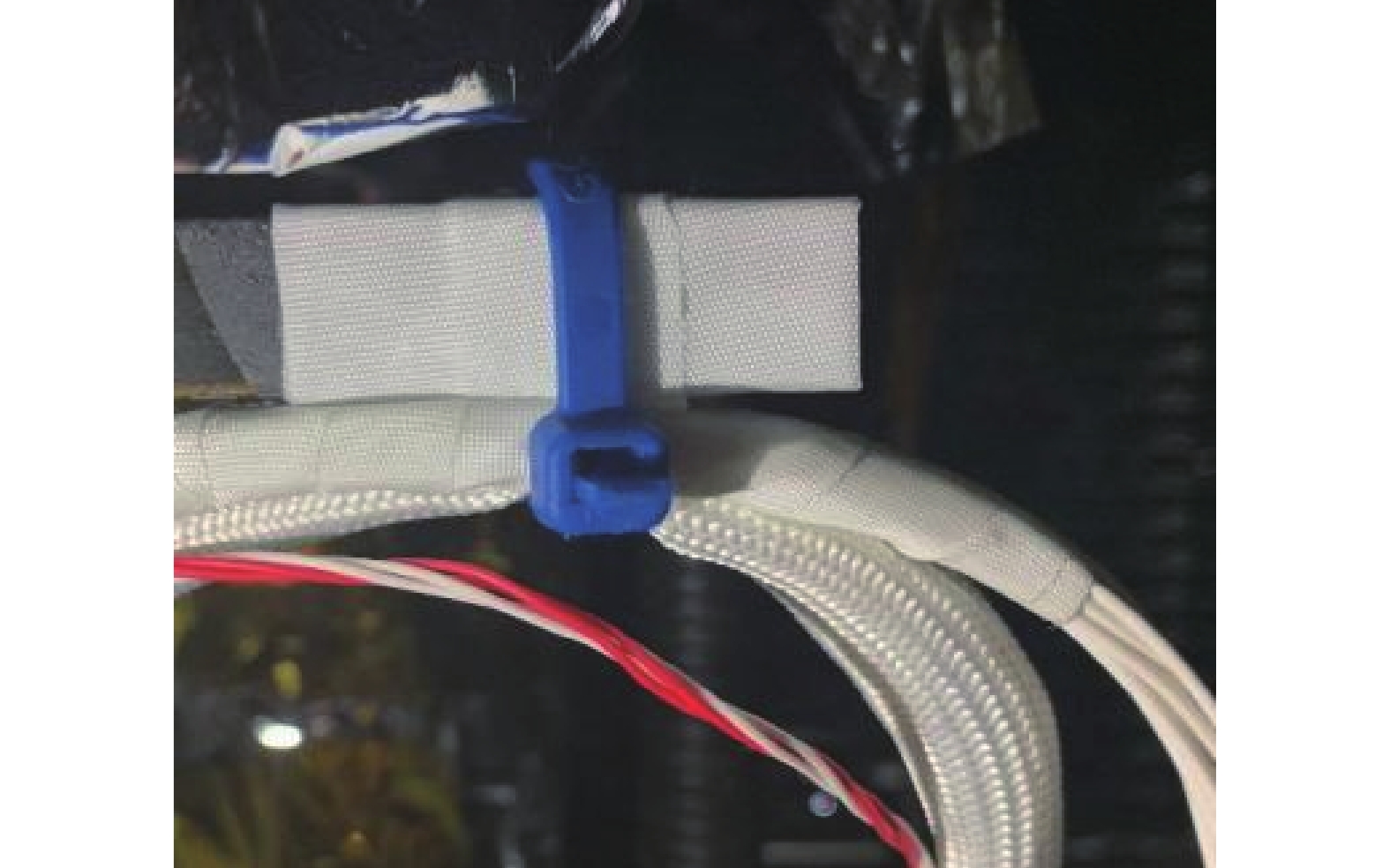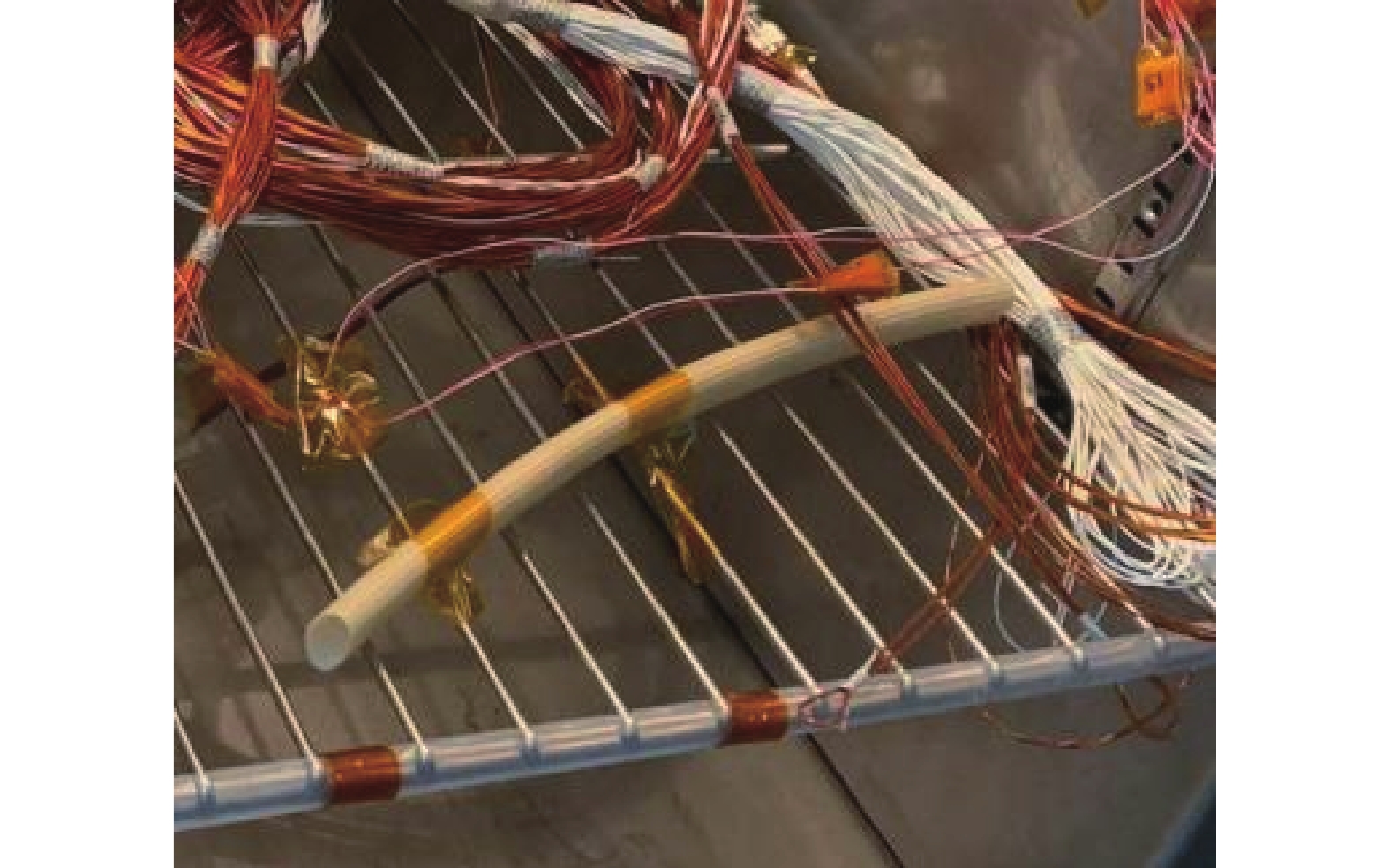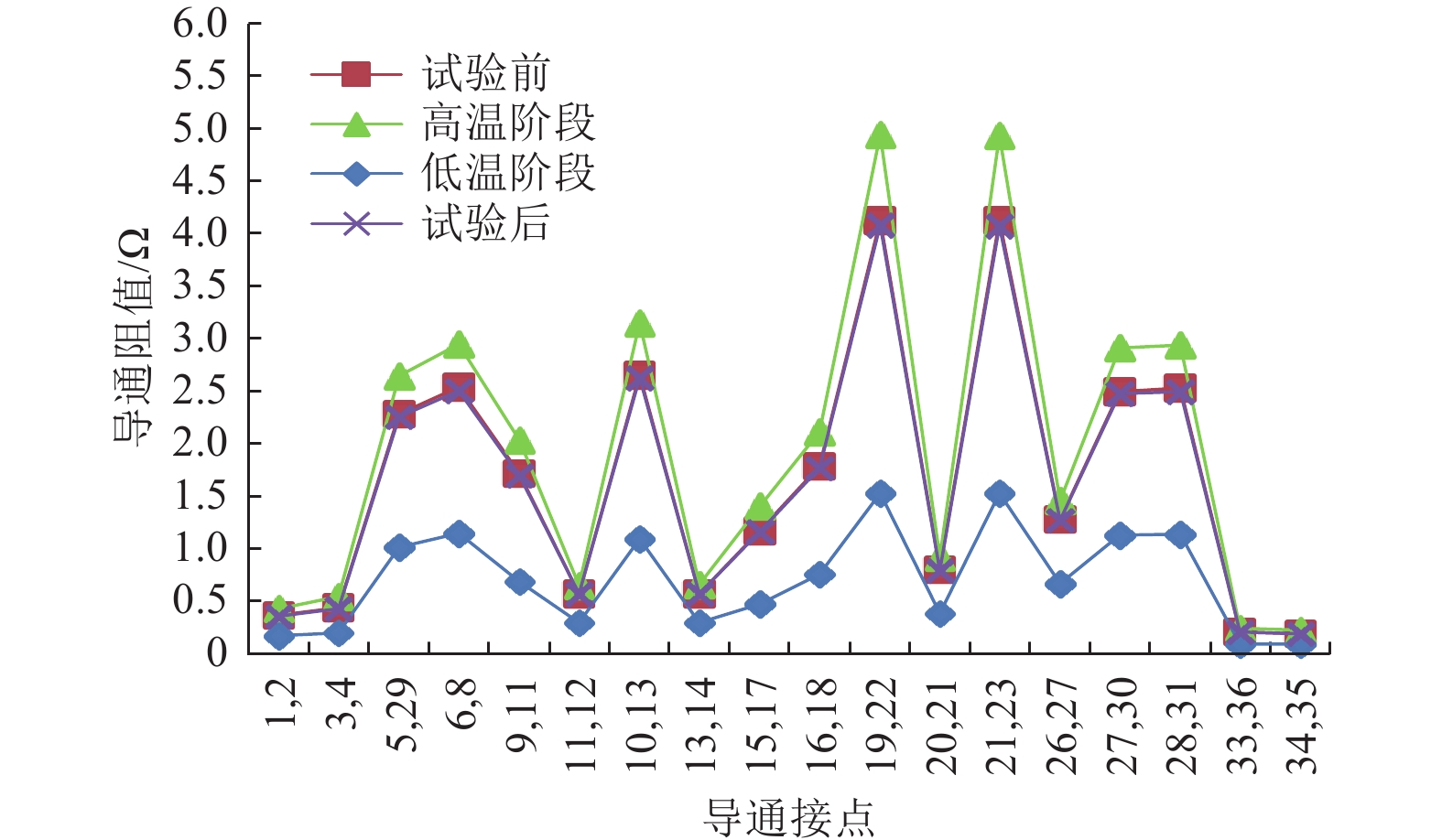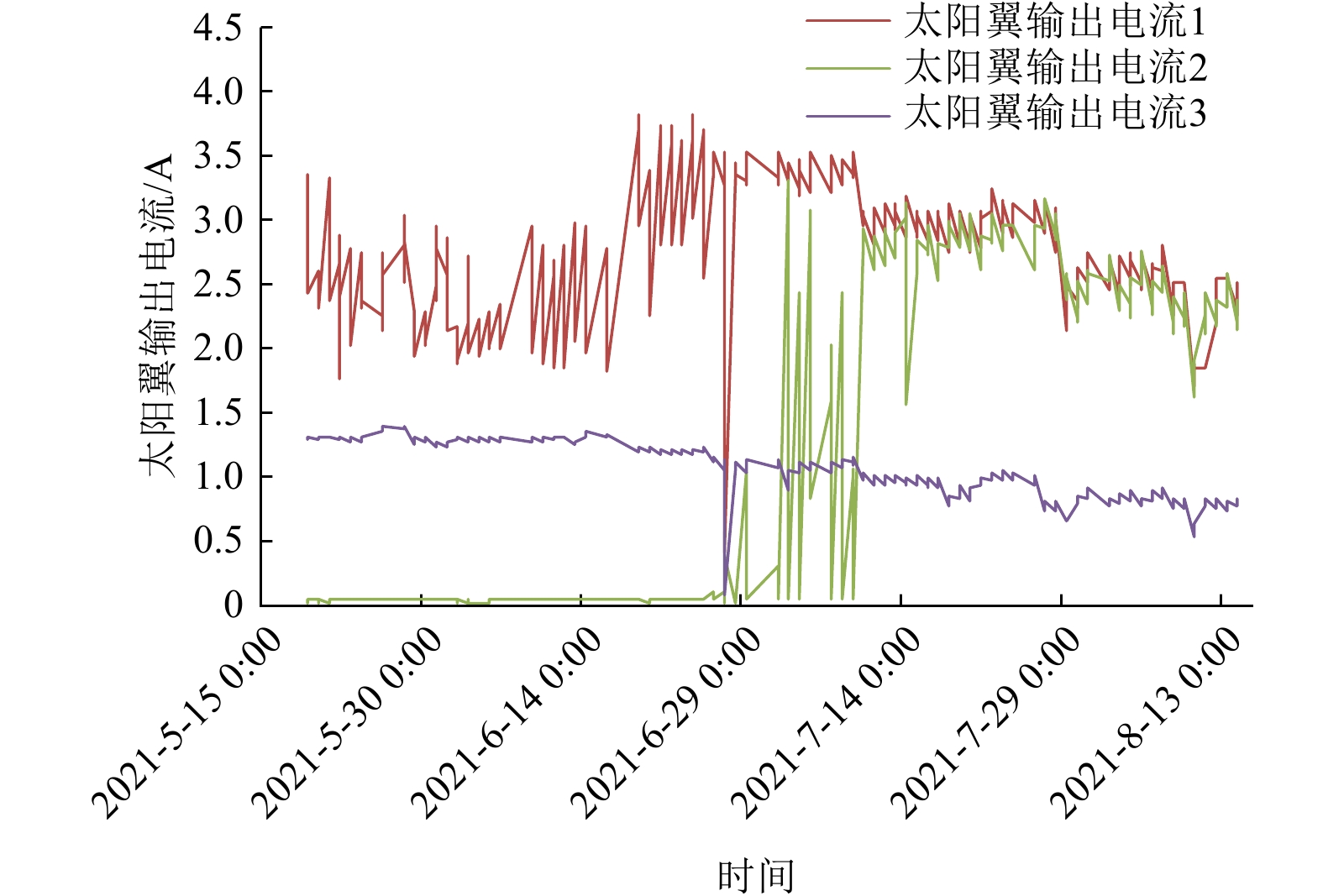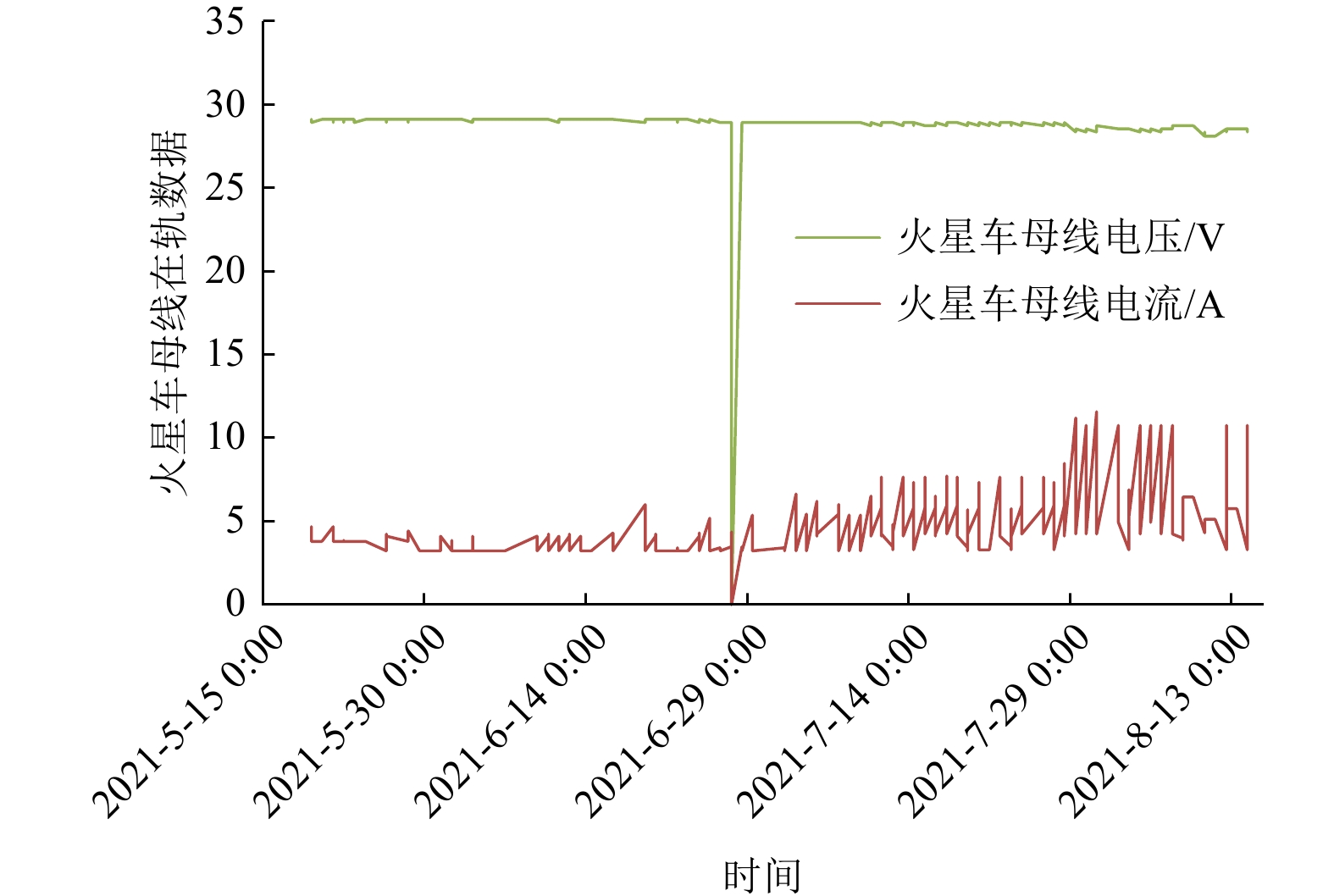-
随着航天器探测任务越来越复杂,航天器电缆需要适应更严苛的在轨环境温度,在极端温度工况(超出电缆温度指标)下转动,并在静态和动态复杂工况下均能够可靠安全地完成信号传输。针对电缆导线在低温环境下会变硬、转动工况下更容易发生电连接器和导线材料损坏的问题[1-3],需对转动电缆开展极端低温环境适应性试验,试验覆盖转动电缆在轨任务期间的环境温度和转动工况参数要求,在地面阶段充分验证转动电缆是否满足在轨任务要求。
目前,电缆温度适应性试验主要针对非转动状态下电缆在高温或低温环境下放电特性、绝缘特性、耐烧蚀性的研究[4-9],电缆在低温环境下转动时的曲挠性能测试方法研究[10]、扭转阻力距对机构的影响[11],缺少航天器转动电缆对在轨极端低温空间环境适应性的研究。
以中国首次火星探测任务为例,“天问一号”探测器是通过一次发射实现火星环绕和着陆巡视,开展火星全球性、综合性的环绕探测,以及在火星表面开展区域性的巡视探测。在轨飞行阶段,火星探测器电缆网为各分系统提供器外、器间、器内的信号传输通路,对整器在轨探测任务的顺利执行起到至关重要的作用。
“天问一号”着陆巡视器在着陆至火星表面后所面临的极端温度达到–130~+70 °C,电缆所用的电连接器的温度指标一般为–65~+125 °C,所用C55导线的温度指标为–100~+100 °C,无法覆盖在轨低温–130 °C。此外,太阳翼、移动装置、桅杆上的器外电缆存在低温下转动工况,电缆转动时面临的在轨环境温度为–70~+55 °C。
本文提出了一种转动电缆对极端环境低温适应性的试验方法,并按照“天问一号”着陆巡视器器外电缆的在轨温度环境进行了极端低温适应性试验,验证了电缆所用的电连接器、导线以及辅料经历在轨低温环境和多次转动后结构完整、电性能可靠,并对试验过程中出现的无法适应火星环境温度条件的元器件的影响进行了分析和替代处理。目前,“天问一号”探测器已成功在轨飞行,探测器电缆的电性能良好,进一步证明了该电缆低温适应性试验方法的有效性。该试验方法可以作为后续深空探测任务中电缆低温适应性的试验方法和技术支撑[12-16]。
-
“天问一号”着陆巡视器转动电缆的极端低温环境适应性试验包含低温贮存、低温转动两部分,可依据试验项目表1和试验剖面图1进行试验[15-20]。低温贮存模拟电缆经历在不转动状态下的环境低温和高温交变,低温转动模拟电缆在转动状态下的环境低温和高温交变,考核电缆在环境温度下静态贮存、动态转动是否存在破损和电性能异常下降的情况[10-11,21-23]。试验过程中,试验电缆在每个温度循环的Tzc1高温保持阶段和Tzc2低温保持阶段仅进行静态贮存,在每个Tzd1高温保持阶段和Tzd2低温保持阶段进行往复的动态转动。
试验项目 主要内容 试验前准备 外观检查,导通、绝缘等测试 试验电缆在转动工装上的绑扎、固定 转动演练,确认工装转动角度、转动速度、试验电缆弯折半径等满足要求,各转动试验电缆之间无干涉 低温适应性试验 1~n –1
次循环温度升至贮存高温Tzc1,导通、绝缘等测试 温度降至转动高温Tzd2,活动电缆弯曲和扭转,导通、绝缘等测试 温度降至贮存低温Tzc2,导通、绝缘等测试 温度升至转动低温Tzd1,活动电缆弯曲和扭转,导通、绝缘等测试 第n次
循环温度升至贮存高温Tzc1,导通、绝缘等测试 温度降至室温,取出试验电缆 试验后测试 外观检查,导通、绝缘等测试 Table 1.Items of cable storage test at low temperature
图1中,Tzc1表示电缆在轨静态贮存时的最高温度点加上外扩温度,Tzc2表示电缆在轨静态贮存时的最低温度点加上外扩温度,Tzd1表示电缆在轨动态转动时的最高温度点加上外扩温度,Tzd2表示电缆在轨动态转动时的最低温度点加上外扩温度。上述4个温度均为试验温度点,需在在轨环境温度的基础上适当考虑温度裕度,以确保试验温度覆盖在轨环境温度。
试验过程中,选取4个控温点即导线表面、电连接器尾罩的金属外壳表面、电缆的外护套如热缩套管表面和耐高温编织套管表面。试验过程中,对试验电缆进行导通、绝缘测试,测试时机覆盖了2个高温保持和2个低温保持阶段,试验电缆与测试设备的连接状态如图2所示。试验结束后,对试验电缆的外观和电性能进行最终测试与检查[24-26]。
-
试验电缆需绑扎固定在转动工装上,模拟探测器器外的桅杆、移动装置和太阳翼上电缆的弯折转动情况。桅杆、移动装置和太阳翼电缆在在轨转动工况下,其转动工作高温Tzd3和低温Tzd4、弯折半径r、转动角度范围θ、转动速度a、转动次数n均不相同。其中,转动工作高温Tzd3和低温Tzd4分别为在轨转动工况下的在轨环境高温和低温,可得出试验过程中转动时的高、低温度点;弯折半径r一般不小于电缆的线束外径的6倍;转动角度范围θ为各转动电缆所在转动机构装置在最大转动工况下的转动角度;转动速度a为各转动电缆所在转动机构装置的转动速度,可得出完成1次往返转动所需时间;转动次数n为各转动电缆在整个在轨任务阶段所需要转动的最大次数[10-11,21-23]。
综合考虑在轨转动工况后,根据转动角度范围θ、转动速度a、转动次数n,确定转动工况的高低温保持时间h> (2θ/a) ×n,并且给出适量的试验条件裕度,确保试验条件覆盖真实工况,且避免试验条件过度严苛导致试验电缆损坏[10-11,21-23]。
试验电缆与转动工装的绑扎固定示意如图3所示,试验电缆实物的绑扎固定情况如图4,绑扎点1和绑扎点3之间的试验电缆模拟移动装置电缆的扭转,绑扎点1和绑扎点4之间的试验电缆模拟太阳翼电缆的扭转,绑扎点2和绑扎点3之间的试验电缆模拟桅杆电缆的弯折。
-
试验电缆应尽量多地引出导线,增加转动过程的导线样本量,电连接器的相邻接点在插座中两两短接,在插头中顺次引出导线,引线方式和分支关系如图5所示。通过测试插头实现全部试验元器件的导通、绝缘和耐压性能测量。
-
“天问一号”着陆巡视器在着陆至火星表面后所面临的极端温度达到– 130 ~ + 70 °C,电缆所用的电连接器的温度指标一般为– 65 ~ + 125 °C。器外电缆选用了J30JHJ、J6W、J36A、CX2-4M1TK和KZ038-2D等系列电连接器,其低温指标– 65 °C并不能满足在轨低温– 130 °C的贮存条件。整器电缆选用了国产C55导线和进口SPL导线,C55导线相较于SPL导线更重但更软,转动电缆选用C55导线,其他整器电缆选用SPL导线,SPL导线的温度指标为– 200 ~ + 200 °C,C55导线的温度指标为– 100 ~ +100 °C,如表2所示。其中,C55导线的低温指标–100 °C无法满足在轨低温– 130 °C贮存条件。而且,电缆没有经历过在轨低温– 70 °C环境下进行弯折和扭转运动。
序号 元器件类型 元器件规格 温度指标/ °C 1 电连
接器J30JHJ系列 –55 ~ + 125 2 J6W系列 –55 ~ + 125 3 J36A系列 –55 ~ + 125 4 J14A系列 –55 ~ + 125 5 CX2-4M1TK –55 ~ + 85 6 KZ038-2D –55 ~ + 125 7 X14K4PJ –55 ~ + 100 8 Y8C-4TKM –55 ~ + 125 9 SK621系列总线连接器 –65 ~ + 125 10 S500系列总线耦合器 –65 ~ + 150 11 D-436线接器 –65 ~ + 150 12 导线 C55导线 –100 ~ + 200 13 SPL导线 –200 ~ + 200 14 CNDBC-PFA-24S2SJ-75 –90 ~ +200 Table 2.Specifications and temperature indicators of components
电缆选用双组份硅橡胶进行电连接器内部灌封,温度指标为– 40 ~ 130 °C;选用热缩套管RNF和热缩套管RSG,其中二者的温度指标分别为–55 ~ 150 °C、 – 40 ~ 140 °C;选用热缩带进行尾罩处理,温度指标均为–40~140 °C;电连接器尾罩出线口的预成型选用热缩套管ATUM,温度指标为– 55 ~ 110 °C;焊点处选用焊锡丝,长期可靠工作的温度指标为– 55 ~ 85 °C;选用绑扎线电缆束绑扎,温度指标为– 55 ~ 260 °C;转动电缆选用耐高温编织套管、硅橡胶玻璃纤维套管防护,温度指标分别为– 55 ~260 °C、– 70 ~ 200 °C。电缆辅料厂家低温指标均无法覆盖在轨低温–130 °C。
对于上述不覆盖型号空间热环境条件的元器件,有必要开展环境温度适应性试验。试验过程中,试验电缆在每个温度循环的低温保持阶段– 145 °C、高温保持阶段+ 85 °C下贮存[15-20],在每个低温保持阶段– 85 °C、高温保持阶段+ 70 °C进行转动,在角度0° ~150°往复转动[10-11,21-23]。试验温度均按照在轨环境温度考虑15 °C的温度外扩。经试验发现,SK621系列总线电连接器、S500系列总线三端耦合器的外护套出现了破损,无法适应在轨环境温度– 145 °C。其它元器件的外观和性能良好,全部辅料的状态良好。
-
试验后,电连接器的接触件无歪斜、弯曲和锈蚀现象,接触件的镀金层光亮且无斑点和脱皮;插头与插座的插拔和锁紧正常;导线无断裂、无损伤。宇航用J30JHJ型和J36A型电连接器的低温试验后外观状态良好,如图6~8所示。宇航用SK621型总线电连接器在低温试验后存在尾部保护套管开裂的现象,S500-S 型三端耦合器在低温试验后存在外护套开裂的想象,而S500-S型双端耦合器的外护套状态良好,实验结果如状态图9~11所示。
-
试验后,双组份硅橡胶的组织均匀、无团聚颗粒物、无气泡和杂质;热缩套管RNF和热缩套管RSG的切口平滑,无卷曲和脱落;尾罩处理用热缩带的切口平滑,无卷曲和粘连,无破损掉渣,轻微变硬不影响使用;预成型用ATUM套管无开裂、破损和移位,结构完整。绑扎线平整且无松散现象;耐高温编织套管、硅橡胶玻璃纤维套管无脱落、变质和变色。各辅料均通过了试验验证,无异常,部分电缆辅料试验后状态如图12~15所示。
-
试验后,试验电缆阻值随温度升高略有增加,符合电缆阻值随温度变化的特性,如图16所示。试验电缆的绝缘阻值≥200 MΩ。试验电缆在500 V/AC电压下60 s无击穿,电性能良好。试验电缆为低频电缆,对于总线、高速、射频等其它类型的试验电缆,按照电缆特性和指标进行相应电性能测试。
-
“天问一号”探测器于2020年7月23日成功发射,2021年2月10日与火星交会并成功进入环绕火星轨道,并在2021年5月15日成功实施火星着陆并开始巡视探测,2021年8月15日顺利完成了90个火星日既定的科学探测任务。
在“天问一号”全任务期间,探测器电缆的在轨温度均在– 130 ~ + 70 °C内,其中火星车的太阳翼、移动装置、桅杆的转动电缆在着陆巡视器着陆火星后的在轨温度遥测数据详如图17所示。以供配电分系统的关键参数为例,火星车太阳翼输出电流满足设计指标要求,落火后的在轨遥测数据如图18所示;火星车全调节母线电压满足设计指标要求,火星车全调节母线电流满足负载使用需求,无异常跳变,落火后的在轨遥测数据如图19所示。“天问一号”探测器电缆的电气信号传输良好,在轨期间无异常故障,圆满完成了任务。
Rotating Cables Design Method of “Tianwen-1” Mars Landing Rover
doi:10.15982/j.issn.2096-9287.2022.20220081
- Received Date:2022-08-23
- Rev Recd Date:2022-09-20
- Available Online:2023-01-04
- Publish Date:2022-12-20
-
Key words:
- Tianwen-1/
- cables/
- rotation/
- extreme temperature/
- adaptability/
- experimental verification
Abstract:The external cables of Mars landing rover faces the extreme temperature, after “Tianwen-1” Mars landing rover lands on the surface of Mars. In allusion to cables would harden at low temperature, the materials of electric couplers and wires more easily damage when rotating at low temperature, the experiment method of low temperature adaptability of rotating cables is designed, to verify the adaptability and rotating performance of cables at Mars low temperature. The experimental results have testified that the cable assembly including electric couplers, wires and auxiliary materials are structurally integrated and electrically reliable after rotating at low temperature of Mars. Furthermore, the cables of spacecraft have experienced in-orbit flight, and have further evidenced the availability of this experiment method, and provide experiment method and technical support for the adaptability of cables to complex thermal environments of subsequent deep-space exploration.
| Citation: | YANG Yi, LIU Yihong, WANG Jing, WU Lequn, ZHANG Xiaofeng, HAN Yue, ZHANG Xiuhong. Rotating Cables Design Method of “Tianwen-1” Mars Landing Rover[J].Journal of Deep Space Exploration, 2022, 9(6): 633-640.doi:10.15982/j.issn.2096-9287.2022.20220081 |

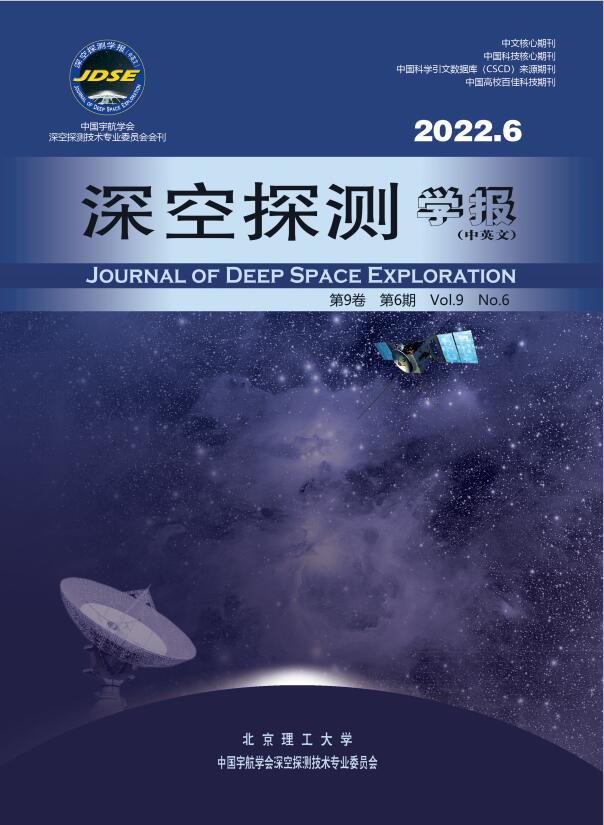























 DownLoad:
DownLoad:

